Fox Terrier: content rules and variety of nicknames
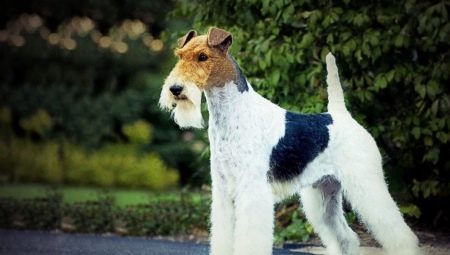
Fox Terriers are considered one of the most recognizable dog breeds. And this is not surprising, because they are one of the most common in the whole world and are loved by many as funny and loyal pets. Nevertheless, such dogs were not bred for entertainment, and this, to a certain extent, affects the specifics of the maintenance and upbringing of such animals. In order for mutual understanding to reign with the chosen pet, you need to figure out what kind of dog it is.
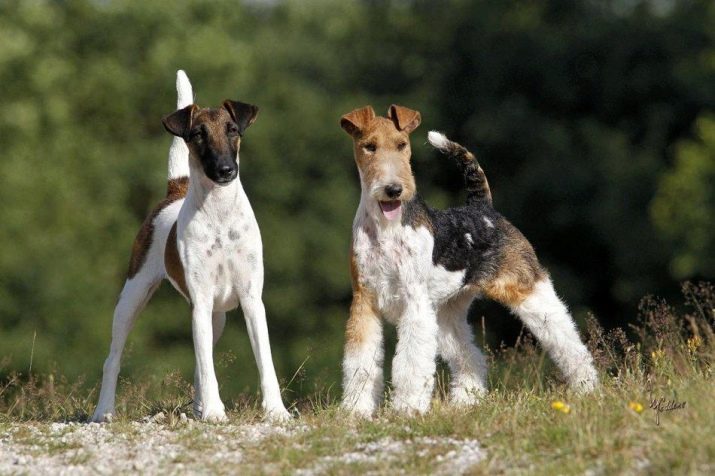
Origin story
As befits the vast majority of terriers, the Fox is a true British. Its name largely explains the main "specialization" of the dog. Despite its rather modest size, it is best suited for hunting foxes (in English "fox") and a variety of rodents living in burrows and annoying people.
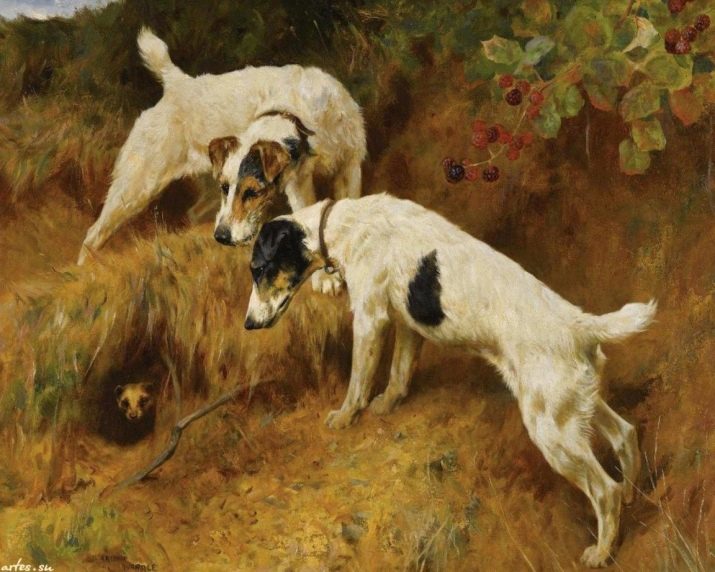
Interestingly, today even scientists cannot say who and when bred modern fox terriers, but it is known for sure that some of these dogs were found in the British Isles long before the advent of the English language - the ancient Romans wrote about them in 55 BC. They described the representatives of the breed as fast animals with loud barking, capable of sneaking into even the tightest burrows after prey.
Apparently, the ancestors of the modern British used them, like other terriers, for hunting rodents in homes and barns - many breeds of small dogs originally had a similar purpose.
Until the four-legged were used by commoners, there was no need to meet certain standards. Weak and unsuitable puppies were discarded, and the babies of avid rat hunters were valued above any other. However, from about the XIV century, a new hobby began to spread among the English nobility, which consisted in hunting burrowing animals.
British peers could afford not only to buy the very best dogs, but even to breed them on purpose to ensure success. Modern scientists believe that at that time the most popular were the smooth-haired fox terriers, considered direct descendants of such breeds as the classic Old English Black and Tan Terrier, as well as the Beagle, Greyhound and Bull Terrier.
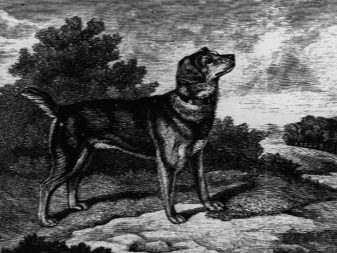



Smooth wool is not very suitable for working in a burrow - it gets dirty and requires careful maintenance. Oddly enough, the wire-haired Fox variety appeared only a few centuries later - at the end of the century before last. For this purpose, fox terriers with the most coarse coats were specially selected, then crossing them with Welsh Terriers. Due to this, the genotype of the two varieties of the breed began to differ significantly.

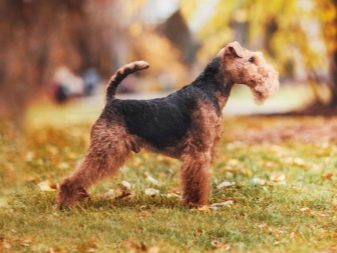
However, dogs are still considered the closest relatives, and in the first time after the appearance of the wire-haired branch, they even tried to cross it with the smooth-haired branch in order to get all the best features of the breed in one individual.
At the same time, for a long time there was no question of considering the Fox Terrier as a specific breed with a clearly recognized standard. Even wealthy hunters preferred to experiment independently of each other, not trying to make their dog look like any of the previously known ones. As a result, we can talk about some kind of special fox terrier, similar to the current one, approximately from the end of the 18th century.
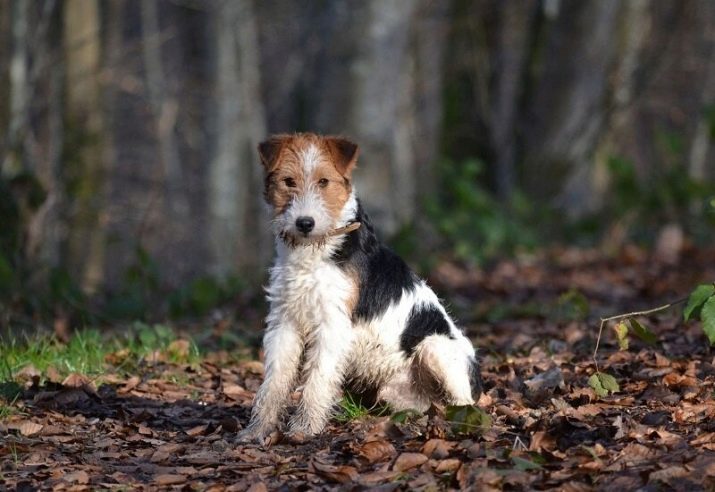
Breeding of modern foxes started approximately in the middle of the nineteenth century. In 1859, small dogs first began to get to dog shows, although they did not immediately come to the court there. Interestingly, by this time they were no longer a curiosity in Russia, but they reached France, Italy and Holland 10 years later. At the same time, having already begun to storm exhibitions, the fox terrier did not have its own breed standard until 1875, and only its appearance gave the breed the opportunity to officially take shape - to enter the lists of the English Kennel Club.
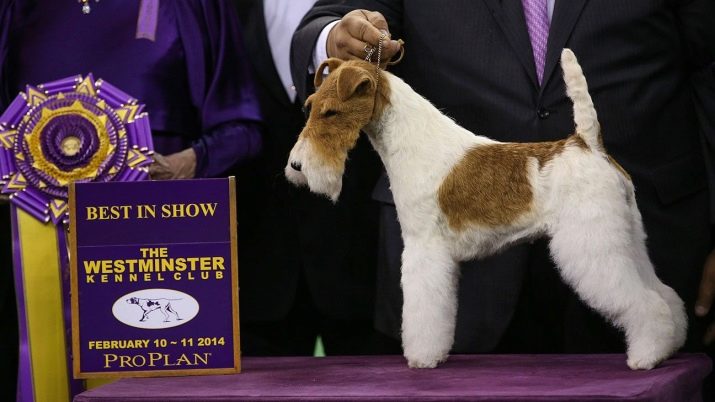
Description of the breed
The breeders, who became the driving force behind the emergence of the Fox Terrier as a separate breed, set themselves the task of creating such a dog that would not have excesses in any direction. Because of this, the modern fox is thin, but not rude, stocky, but not squat - in a word, he is strong, agile, and elegant. At the same time, according to none of the above parameters, the dog could objectively not be considered a champion, but as a hunting dog it seems almost an ideal solution.
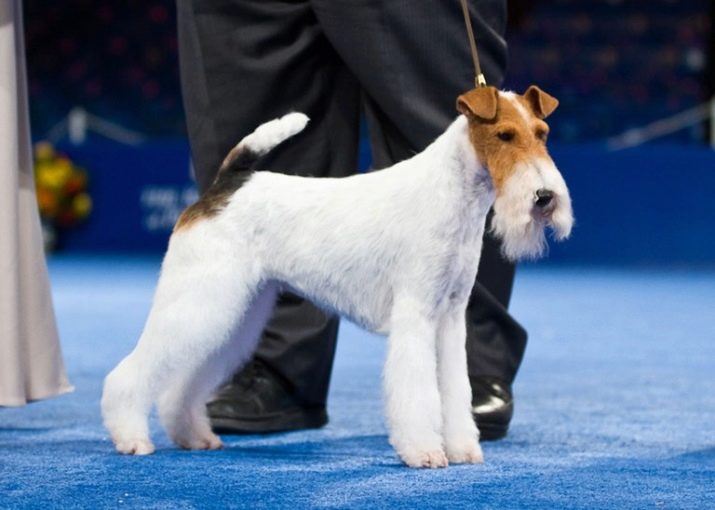
As befits a dog bred specifically to work in a burrow, the size of the fox terrier is not at all impressive - its height at the withers does not exceed a modest 39 centimeters... With such a modest size, the dog does not look like a feeble decorative dwarf - on the contrary, even by the look of the animal, one can determine that a strong personality is about him.
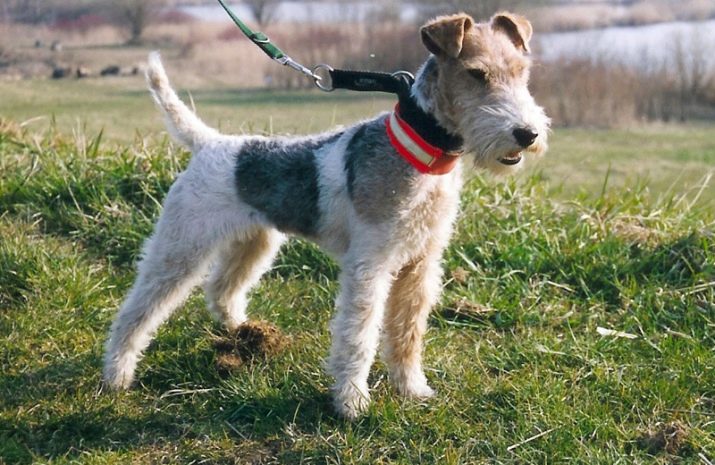
Such a pet is not devoid of a soul, which means that you need to find a common language with him.
From above, the dog's skull has an almost flat surface, the head is elongated, while the muzzle occupies almost the entire length of the head. Strong jaws are a key part of it - inexperienced dog breeders usually cannot believe that such a small dog has such a strong grip that a full scissor bite provides.
The nose is medium in size and has a black lobe, while the dark eyes are small and rounded, with little to no bulging. Fox Terrier ears are relatively small and triangular in shape, hanging slightly towards the cheekbones.
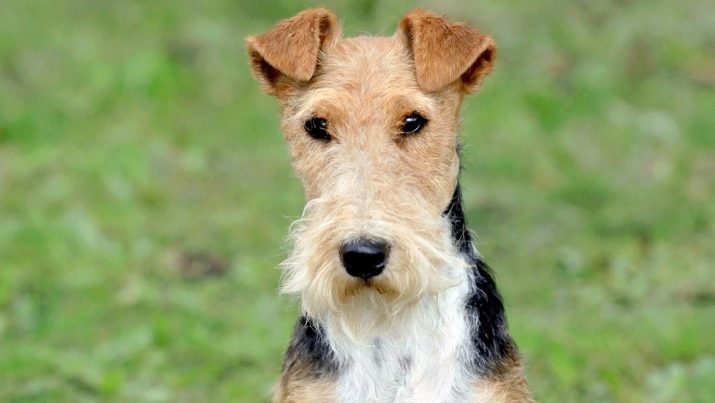
The characterization of the neck usually begins with a certain dryness in the link between the head and trunk. The lack of thickness should not be misleading - there are muscles here, and there are enough of them to solve serious hunting tasks. Closer to the body, the neck expands.
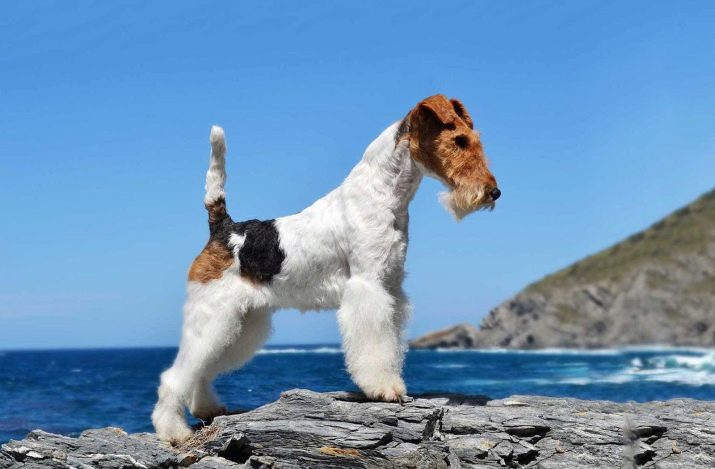
The body of the animal is not very long - this is equally true for the back and for the lumbar region. At the same time, the chest is well developed, false ribs are noticeably prominent on it. The body is crowned with a neat tail, which, according to the standard, must be lifted up, remaining straight, and nothing else.
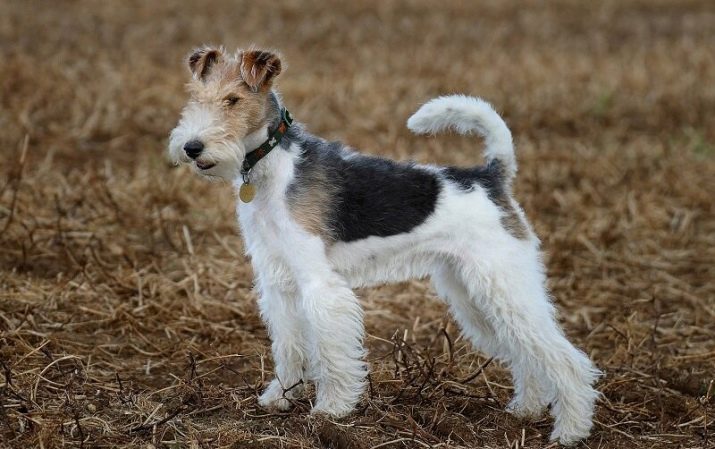
It is customary to stop it by about a third, but in many European countries such a procedure is prohibited.
The dog moves thanks to the straight front limbs with well-developed shoulders, as well as the hind ones - with pumped up hips, capable of giving the animal a certain strength. The paws themselves are round and compact. As for wool, its appearance varies greatly depending on which subspecies we are talking about - smooth-haired or wire-haired. The first has a very short (up to 2 centimeters), but thick fur, which is pressed to the body, the second has curly "bristles" in length within 2-4 centimeters.
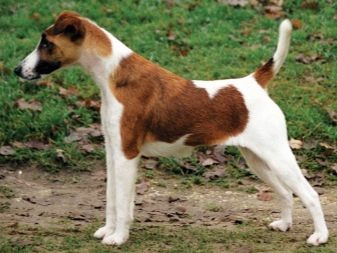
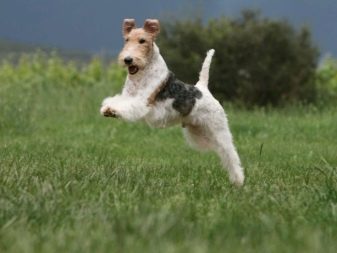
In terms of color, the fox terrier is usually white, but with numerous inserts, which can be black, reddish-brown or black-and-white.
There are certain signs in the presence of which a particular fox is guaranteed not to be admitted to the exhibition. These are atypical colors such as coffee, blue or red stains. The coat is allowed as short and soft, and hard, long, however, fluff is completely unacceptable. The tip of the nose is strictly black, the absence of any color or the presence of several at once will disqualify the dog. Ears should be lowered, but not weak-willed.
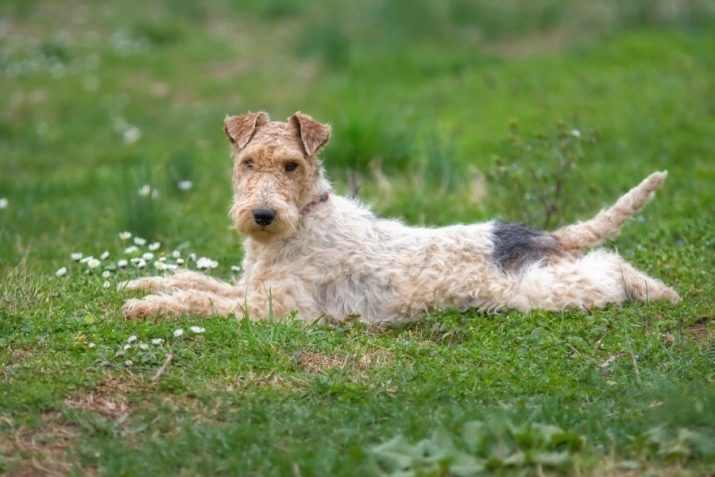
Overshot or undershot mouth is also a problem and breeders discard young animals.
Character traits
Fox Terrier owners should prepare in advance that their pet is not a subordinate, but an equal inhabitant of the house, and it is also good, if not an absolute leader. The doggie has impressive self-confidence, he is mobile and active. The genetically conditioned readiness to fight any enemies makes him not just a strong, but a dominant personality.

The owner should immediately tune in to the fact that his new roommate requires serious education, because the missed moment will not be able to return, and the willful beast will grow up disobedient. Who exactly will be insanely delighted with the appearance of such a friend, so these are children. As befits a hunting dog, fox terriers have an inexhaustible supply of energy and, in the absence of the opportunity to hunt, they will gladly spend their energy on games.

The Fox Terrier is very curious and will try to scout out all the nooks and crannies.
The compatibility of this breed with other pets is questionable. It all depends on how well the dog is brought up, whether he was taught that he will not necessarily be one hundred percent king of the position. If you are raising a puppy, and the genetics of the puppy will also be relatively successful, it is possible that the fox terrier will get along well even with the traditional enemy of all dogs - the cat.
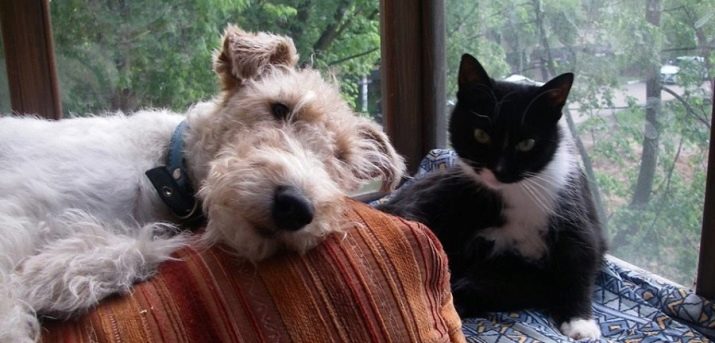
At the same time, we must not forget that these animals were bred for hunting needs, which means that a certain degree of aggressiveness should still be inherent in them., and some bully will be happy to get into a fight with any beast. Regardless of how peaceful or hostile your individual is, remember: other dogs and rodents traditionally cause a special negative in the representatives of the breed.
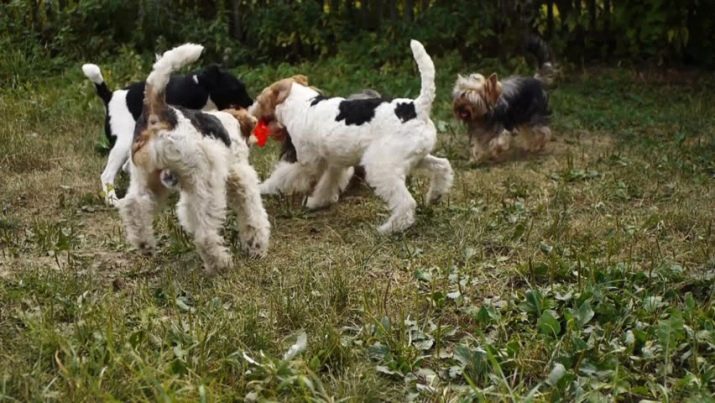
The hunting soul determines another unusual feature of the fox terrier: he is very fond of digging holes.Do not think that the dog is familiar with the rules of decency and will only engage in his favorite hobby on the street. If the owner does not find time for timely and rather long walks, the dog will try to dig a hole right in the apartment.... Another specific characteristic of this animal is that this is exactly the dog that must necessarily chase every passing vehicle, so it will be difficult for owners in cities with busy traffic.

Despite the fact that the fox terrier is intended primarily for hunting, it would be a mistake to think that such a dog is not suitable for owners who are not fond of hunting. In fact, such a dog easily becomes an excellent watchdog, because he has all the necessary inclinations for this. This self-assured shorty is convinced that the territory he is used to is his personal property, and just won't let anyone in there.
Naturally, an animal that constantly fights with foxes and other similar animals cannot be fearful, so this guard does not have authorities capable of intimidating him.

Finally, the fox terrier barks very loudly, and even more powerful help can react to its booming noise, which scares off most potential intruders.
Life span
Fox Terriers live relatively long in ideal conditions - even 15 years may not be the limit for a well-groomed dog. In order for the pet to live as long as possible, you need to properly care for it and do not ignore mandatory measures like vaccinations and deworming... As befits a hunting breed, these dogs are usually praised for their fairly good health and increased stamina, thanks to which they usually live long enough even without outstanding care.


However, if you are not ready for unpleasant surprises, it is better not to start the dog's health condition, since there are certain diseases to which Foxes are susceptible to an increased degree. The most dangerous are epilepsy, diabetes and cataracts. Most often, a predisposition to such ailments is laid down at the genetic level, therefore the task of a person who decides to acquire such a favorite is diligently be interested in the pedigree of the puppy you like in order to protect yourself from surprises.

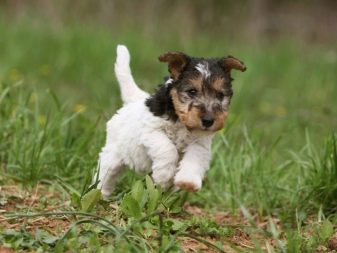
Comparison with the jagdterrier
These two breeds are difficult to confuse with each other, because they are the closest relatives. German game terriers were bred on the basis of the English fox terriers. At the same time, they have completely different characteristics, and it is impossible to choose which of them is definitely better - dogs are simply suitable for different purposes.


Both breeds are classified as hunting, but the difference lies in how the breeders felt about the creation of each breed. So, the vague standard of the fox terrier was formed back in those days when no one seriously engaged in selection - this is a dog whose type was not specially selected. This is simply the most successful hunting dog of all that were at the disposal of the hunters of the century before last. Among other things, fox terriers have been performing at exhibitions for over 150 years, which means that in many respects their standard presupposes to follow external signs, even to the detriment of professional qualities.


The Jagd Terrier, although bred on the basis of the Fox Terrier, was created in a completely different way. It was taken out by people who did not like the fact that even hunting dogs should be aesthetically attractive, while something completely different is required of them. These people deliberately chose the culled dark fox terriers, since experience suggested that such animals behave much more aggressively on the hunt and are able to successfully get involved in a fight with any rival.
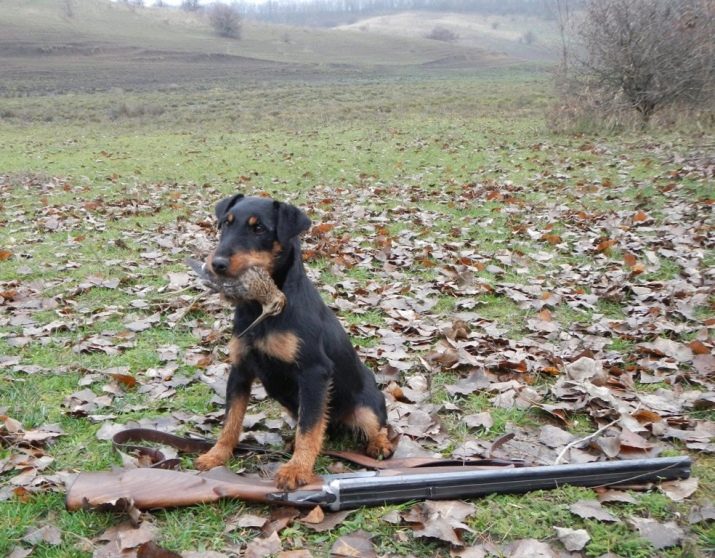
In appearance, the only significant characteristic for the representatives of the German breed is only practicality, but they must cope with their main functions of a hunting dog unsurpassed.
For this reason, the Fox Terrier and the Jagd Terrier are dogs for different tasks.... Foxes today are practically not used for hunting - the overwhelming majority of these dogs serve as companions, in extreme cases - as watchmen. They are cute, children can play with them - in a word, this is a typical pet that the whole family loves. In this regard, the jagd terrier has remained a real pro in his field, and in most cases it is the hunters who turn him on, since such a dog becomes literally insane with rage when he sees a rival suitable for the role of game.
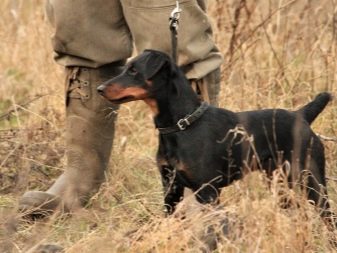

This dog is even more mobile and much more aggressive, therefore keeping such an animal at home "for the sake of beauty" is an amateur's business.
What to feed?
The main rule that the owners need to clearly learn: the fox terrier does not understand at all when to stop, he will eat until the food runs out. For this reason the dog should never be overfed, as well as it is unacceptable to pamper the animal with delicacies, otherwise it will simply get fat and lose the ability to move normally, not to mention cardiovascular diseases.
In order not to make a mistake in the dosage, many owners prefer to feed their pet with dry food with a known calorie content per 100 grams - products of holistic or super-premium classes are suitable for this purpose.

If you decide to feed your four-legged friend with natural products, you will have to calculate the calorie content yourself. In doing so, you should focus on certain foods, trying to avoid what is not mentioned in the list below.
- Meat and fish... Since the dog loves to eat and can easily get fat, they usually feed him low-fat types of meat, such as lamb or beef. If the meat itself can be given raw, then beef offal, which are also allowed for inclusion in the diet, are allowed only in boiled form. In addition, it will be useful for the dog to periodically include sea fish fillets in the menu.



- Other animal products... Some amino acids are inherent only in animal food - especially those products that are intended for raising young animals. Chicken eggs are shown to fox terriers, as well as cottage cheese. Both are valuable sources of a number of vitamins and minerals that are difficult to obtain elsewhere. But it is better not to experiment with other fermented milk products and especially fresh milk.


- Vegetables and fruits... As in the case of humans, the main source of vitamins for Fox is still greens, which should be given regularly. For these purposes, for example, cabbage, carrots, beets and apples are suitable. At the same time, it would be a big mistake to give any fruit to the animal - for example, it is generally undesirable for dogs to eat legumes or citrus fruits.



- Cereals. Fox, even if he has never been involved in the hunt, is a model of a real zest - he is constantly on the move and spends a mind-boggling amount of calories. A variety of cereals are the best source of them, and although not all are allowed for the pet, oatmeal, rice or buckwheat should be present in its diet with an enviable frequency.


Curiously, experts advise giving the fox terrier one fasting day once a week - on this day, the dog can only be fed with rye bread crumbs, raw carrots and water. Such fasting has a positive effect on the digestive system of the animal, which gets an excellent opportunity to rest. By the way, of all vegetables, only carrots are given to the pet raw - all other fruits will have to be specially stewed. The opposite rule works with fruits - they are never served cooked.



The above menu is relevant for an adult dog, but not for a puppy. Little by little they begin to accustom the kid to "extraneous" food even when he feeds mainly on milk.They start with periodic replacement of it with diluted milk powder, slightly sweetened with sugar, and a little later, you can gradually add semolina to this mass. By the end of the first month, the predator is obliged to get acquainted with animal products - he is finely scraped meat and treated to the dog with chicken yolk, which is very useful for the formation of a young body.
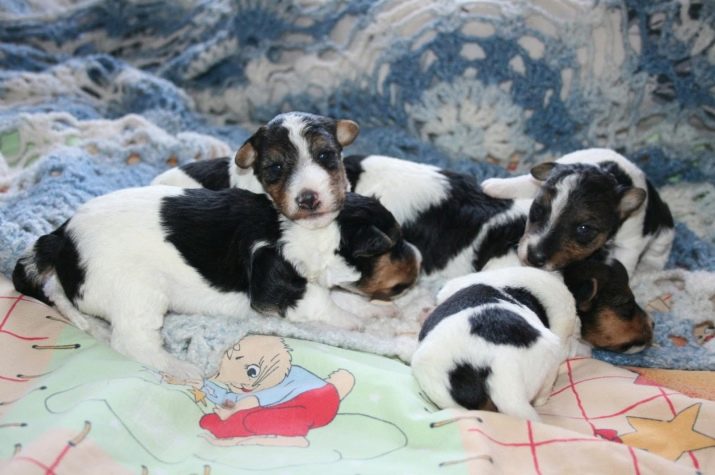
At 5 weeks, it's time for the fox terrier to include fresh vegetables in the menu, and at 3 months, when the stage of intensive formation of the skeleton begins, the baby should be given cartilage and marrow bones.
How to care?
As befits hunting dogs, fox terriers are not particularly picky about living conditions. Given the modest size of the dog, he can live both in a private house and in a city apartment, only the owners need to keep in mind the increased mobility of their pet. In the absence of your own personal plot, you will have to walk the dog more often and more intensively.
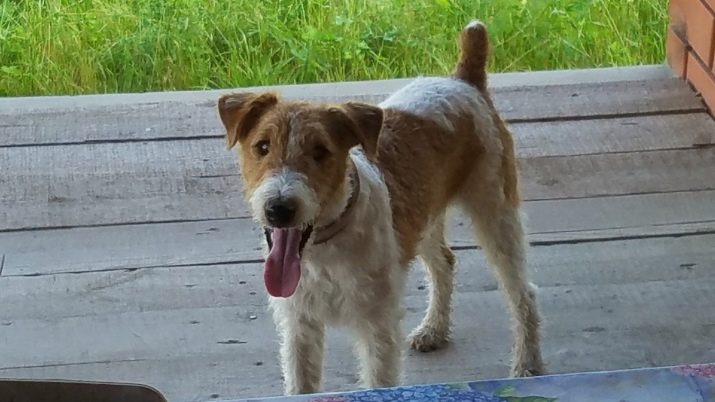
Ignore the walk or limit it to an insufficient level - and a pet dog will surely come across at home, but not out of malice, but simply because he has nowhere to put his extra energy. In rural areas, this is somewhat easier, since the four-legged friend can walk himself. But then you need to make sure that the fence on all sides is an insurmountable obstacle for the shorty, who is very jumpy.
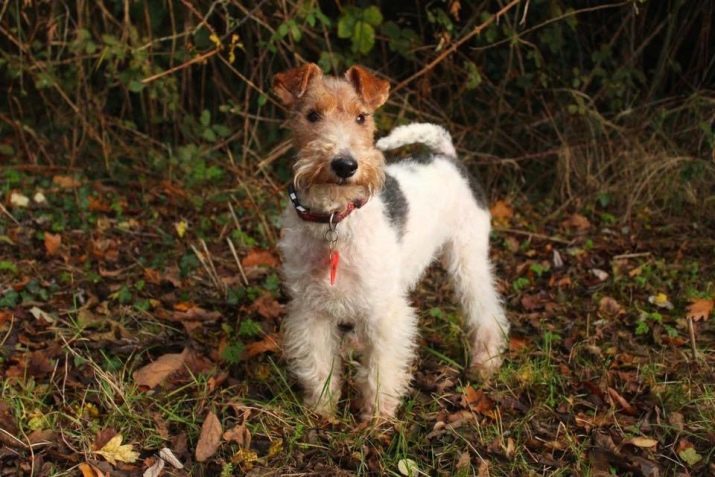
Smooth Fox Terriers require minimal maintenance in terms of hygiene - short and smooth fur can be brushed once a week, and dogs rarely need to wash at all, since wool has a unique property of repelling dirt.
Wire-haired brethren, it would seem, should be even more resistant to any problems, but their hair of increased length is prone to entangle pollution in its structure and simply clump into lumps, so lovers of aesthetics will have to suffer. All these curls have to be trimmed 3-4 times a year, and the procedure is not too approved by the dog itself - for this reason, it is advised to accustom the puppy to beauty from the age of one and a half months.

This is done because the curly hair retains the individual hairs that have fallen out, and the dog has to "comb out" itself on its own, during which it can easily injure itself.
In the case of most dog breeds, it is advised pay special attention to eye hygiene, but the fox terrier usually has no problems with this - you can periodically inspect the corners and remove accumulated mucus from there with a damp cloth. Oddly enough, you should not cling too much to your ears - you need to check only once every 2 weeks, and you need to clean not the slightest specks of dust, but only well-visible dirt and large lumps of sulfur.
But paws require much more careful care - the pads of the animal are very delicate, and experts recommend washing them after each going outside, and even moisturizing them with special creams.

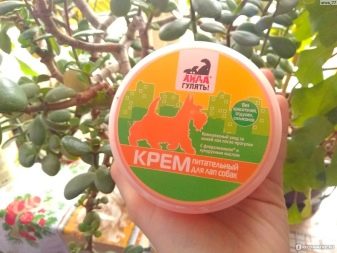
Education and training
In terms of training, the fox terrier is very controversial: on the one hand, it has a rather cool attitude to training, and on the other hand, in the form of a game it can be carried away and trained. Experts say that the dog will learn much faster if you show that learning is insanely interesting for you. The animal tends to become attached to the owner and tries to act in such a way that the owner is pleased with him.
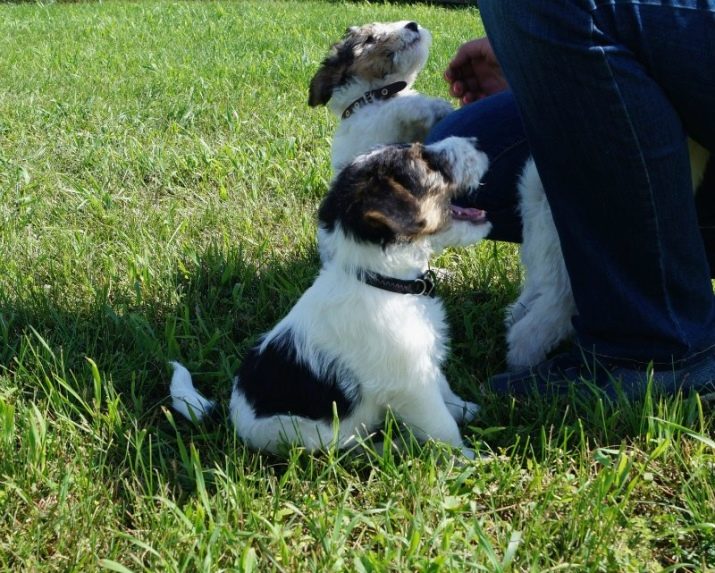
It should be understood that a person should not go too far: study should be interesting and exciting, active and varied, and your excessive enthusiasm for it will simply kill your pet's interest. It is recommended to "shock" the puppy with an unexpected change of teams. Dog handlers give one more piece of advice: the pet will be more attentive to training issues if you have already satisfied his restlessness by taking a good walk.
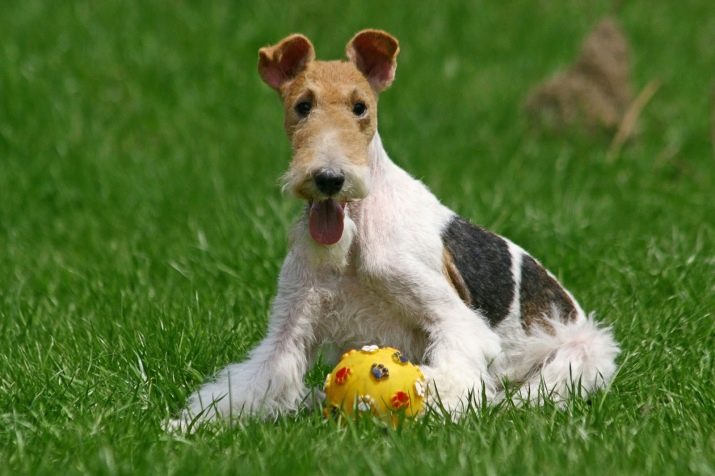
In a civilization with an abundance of various pets, it is fundamentally important to calm down the hunting instincts of the beast a little, therefore restraint and obedience while walking are critically important.Keep in mind that it will not work to make the dog completely emotionless - he will still sometimes break off on cats, and this will have to be treated with a share of understanding.
Since we are talking about walking down the street, it makes sense to teach the dog such a skill as a toilet on command - the animal easily assimilates this wisdom.
Another important point in training is training the fox terrier to the leash. At first, it seems to the hyperactive Fox to be completely wild about restricting his freedom of movement, but without this you risk simply losing a friend in the city crowd.
Experts say that collar training must be combined with team training - the leash itself increases the discipline of the student, which means that it accelerates the assimilation of commands. In the process, the command "Aport!"
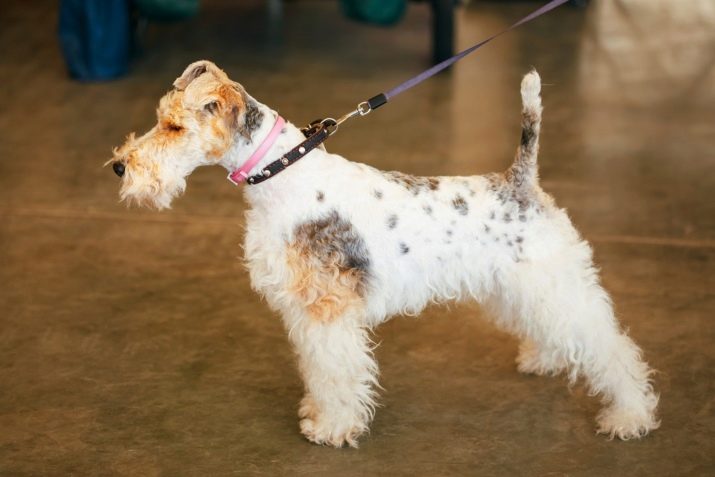
At the same time, it is undesirable to use hollow plastic toys that simply will not survive contact with the powerful jaws of this strong baby.
Since representatives of this breed are often bred for trips to exhibitions, you need to teach the dog to touch - this will necessarily happen at the show. It is noted that stroking the back and head, as well as light pulling on the tail, contribute to another useful result - from this, the correct posture is formed in the Fox. While the dog is small and not yet aggressive, it makes sense to involve people unfamiliar to the animal in such training - then it will be a full-fledged preparation for the exhibition.
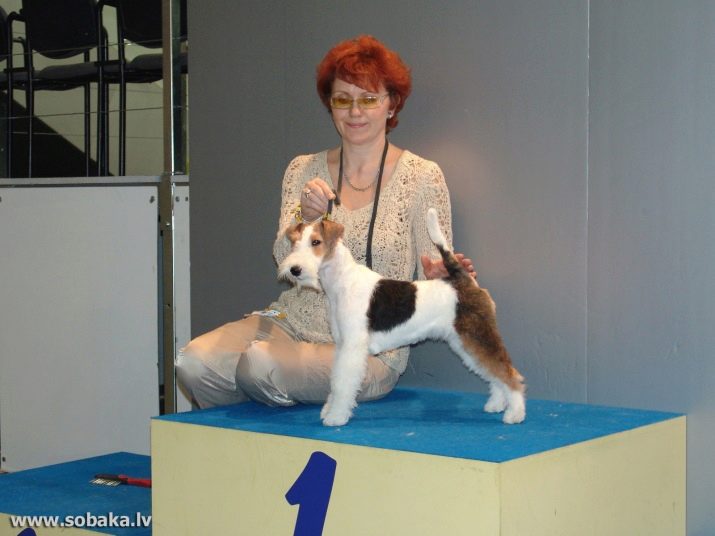
Fox Terrier is very self-confident, he is not inherent in modestytherefore, a well-bred puppy should be specially trained in the principles of cultural behavior and restraint. A simple example: separate your own meal from the dog’s meal, do not treat your pet to food from your table, otherwise the little sly one will quickly understand that you can eat on the table.
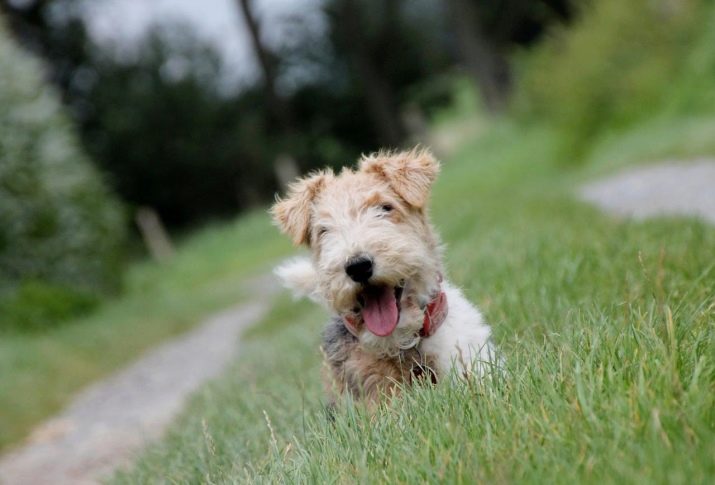
Having spoiled your pet, sooner or later you will come across the fact that he will not consider it shameful to climb onto the table and feast on it right there, but this is not a problem for him - he jumps perfectly in height.
The same applies to toys purchased specifically for the animal - they should not be associated with any other objects in the house. So, an attempt to play with a four-legged friend with a napkin or rag will lead to the fact that any fabric in the house will be perceived only as a toy. Then do not complain later that the dog ruined your pants or curtains.

Popular nicknames
The name for the puppy should be chosen thoughtfully - it should be short and simple so that it is easy for a person to pronounce it and just remember the owner of the nickname himself. At the same time, the name should be liked by all household members, because renaming a puppy is a big foolishness.
For a boy, as befits a real English gentleman, any English-speaking male name is suitable, especially if it has a certain touch of aristocracy. Such dogs are often called like this: Archie, Mike, Luke, Oscar, Jerry, Charlie, Henry or Simon. You can, of course, do something more original - many men name their pets after idols, thanks to this, dogs named Zidane, Messi, Osborne or even Rockefeller.

For girls, you need something more gentle, but the main direction of the choice remains the same - the emphasis is on English names, only for women. You can often find fox terriers named Dina, Molly, Daisy, Sally, Linda, Gloria, Chelsea. Bitches are less often named after idols, but still nicknames like Heidi, Adele, Limes or even Gucci meet. But there is more patriotism among the ladies, so do not be surprised when you meet Fox by name The bug.

For the characteristics of this breed of dog, see below.






































